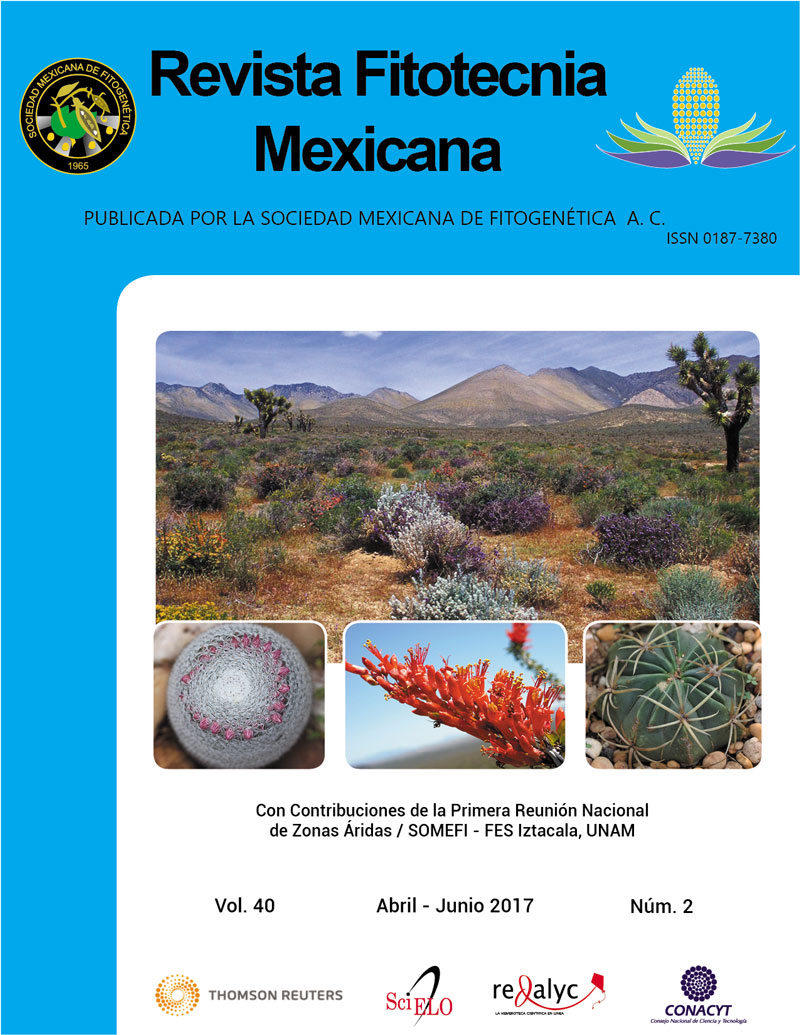GENETIC UNITS FOR THE CONSERVATION OF Mammillaria (CACTACEAE)
Main Article Content
Abstract
Mammillaria groups 200 species. Mexico harbors 164 species, 85 % are endemic and 113 are listed in the Official Mexican Standard NOM-059 SEMARNAT-2010. In spite of their importance in biodiversity and serious conservation crisis, the scarce information documented for these species does not allow proposals for protection strategies. Our objective was to estimate the population genetic diversity levels of M. hernandezii, M. kraehenbuehlii and M. napina to identify genetic conservation units. Twenty-four individuals from two M. hernandezii populations and 120 individuals from five populations for the other two species were genotyped with ten microsatellite loci. In the three species the observed heterozygosity levels were lower than the expected ones (M. hernandezii 0.58, 0.65; M. kraehenbuehlii 0.61, 0.73; and M. napina 0.56, 0.74). The allelic diversity ranged from five (M. hernandezii) to eight alleles in the other two species. The three species showed heterozygotic deficiency possibly due to genetic drift since their populations are small, but selfing may also be involved. Gene flow levels were high for the three especies indicating that genetic drift, pollen and seed dispersal systems determine the genetic structure. Three genetic groups are proposed for M. kraehenbuehlii and M. napina to be considered as reference for conservation programs of the species and their habitats. The main threats for the three species are severe landscape transformation, which isolates the populations, and looting. For M. hernandezii, the number of studied populations should increase to guarantee conclusive results of its population genetic diversity. Currently, the geographic distribution pattern in small patches indicates severe habitat

